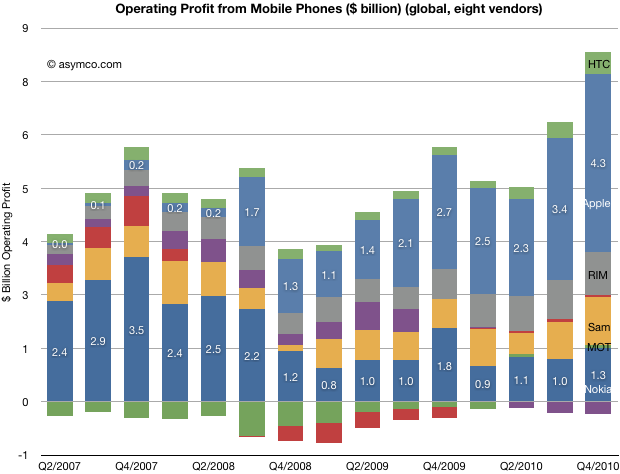When I started Asymco.com I did not have a plan. I did not have a policy or vision statement. I wrote what I found interesting. I knew nothing of blogging or of web publishing as a business. Over the following nine months I learned a few things. I also learned a bit about how web publishing (and publishing in general) works.
My observations were brought into clear focus by this brief overview of the core values of web publishing summed up by this leaked document form AOL: “The AOL Way“.
- AOL tells its editors to decide what topics to cover based on four considerations: traffic potential, revenue potential, edit quality and turn-around time.
- AOL asks its editors to decide whether to produce content based on “the profitability consideration.”
- The documents reveal that AOL is, when the story calls for it, willing to boost traffic by 5 to 10% with search ads and other “paid media.”
- AOL site leaders are expected to have eight ideas for packages that could generate at least $1 million in revenue on hand at all times.
- In-house AOL staffers are expected to write five to 10 stories per day.
- AOL knows its sites are too dependent on traffic from AOL.com, and it wants its editors to fix the problem by posting more frequently, with more emphasis on getting pageviews.
This codification of values has inspired me to put in writing my own priorities for Asymco:
- Learn by writing. Teach by listening.
- Improve. Move the intellectual ball forward.
- Illuminate topics which are bereft of analysis.
- Be notable. “The proliferation consideration.” How likely is the idea to being widely re-published?
- Review. Encourage participation by reading all comments and reply to as many as possible. Police comments with zero tolerance.
- Repair. Declare and correct errors.
- Select. Publish only when the contribution is unique. Avoid redundancy, clutter and noise. Don’t waste reader time.
Many have asked: What about the business model? I’m afraid there isn’t one. I’m still naive enough to think that if I build a great product then everything else will take care of itself.

